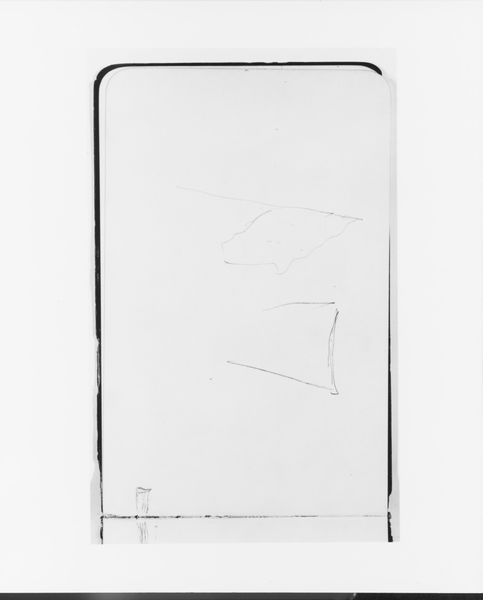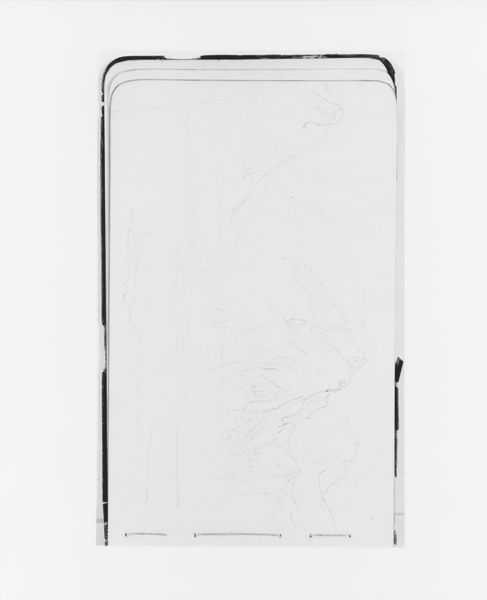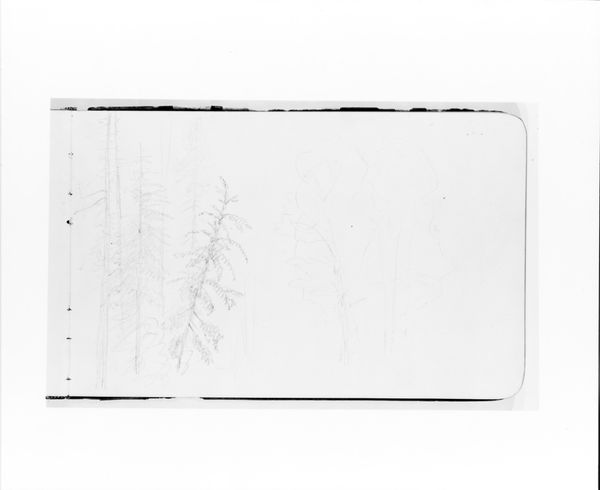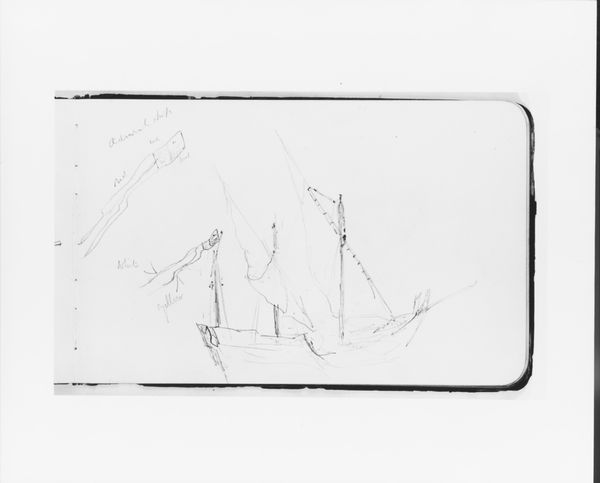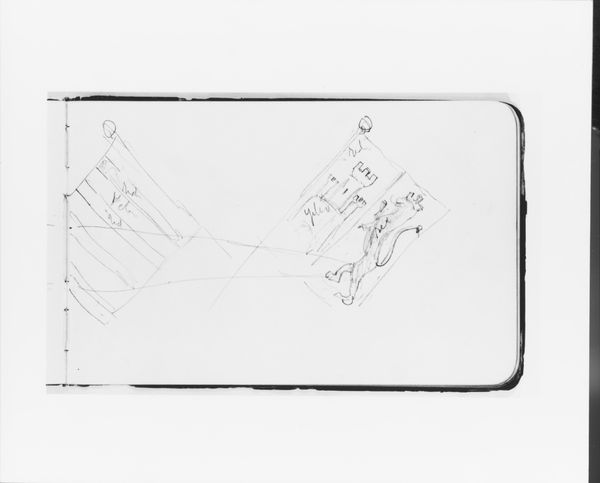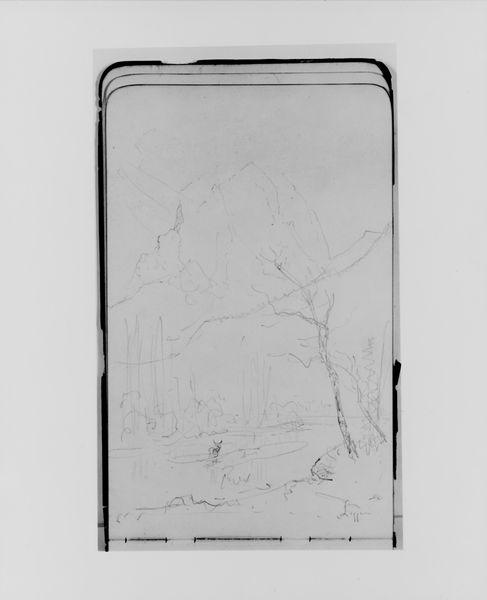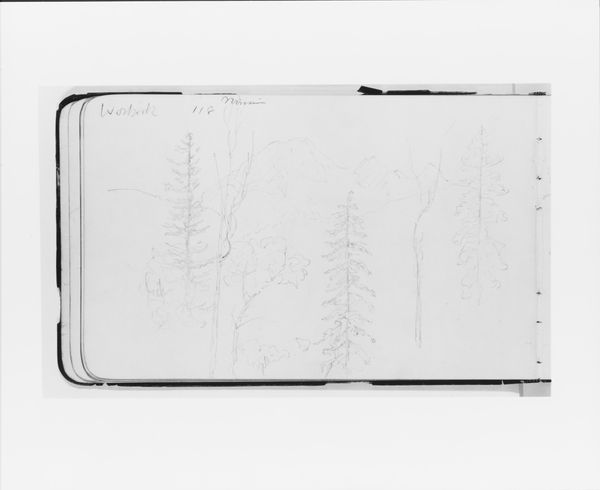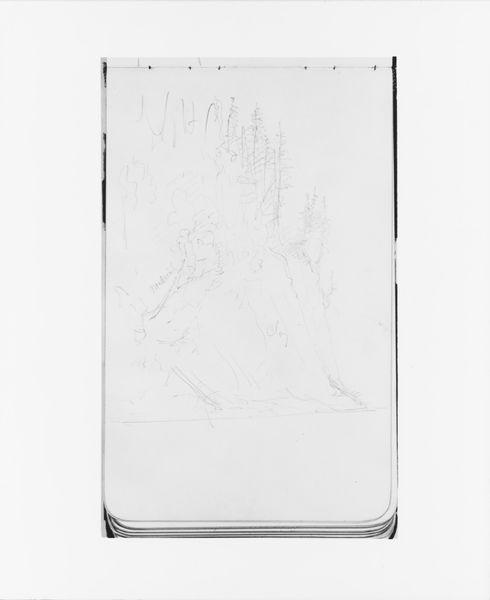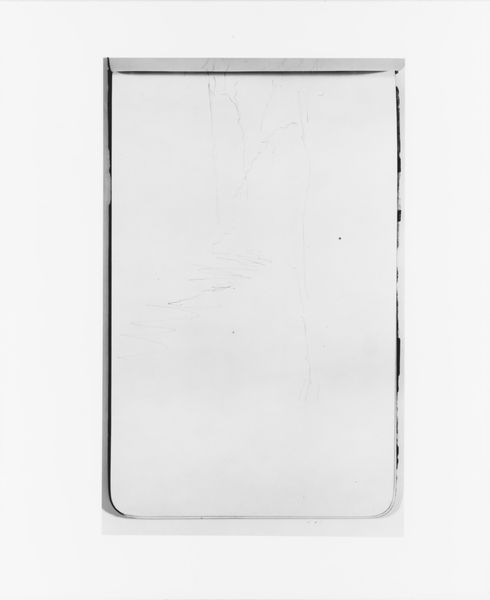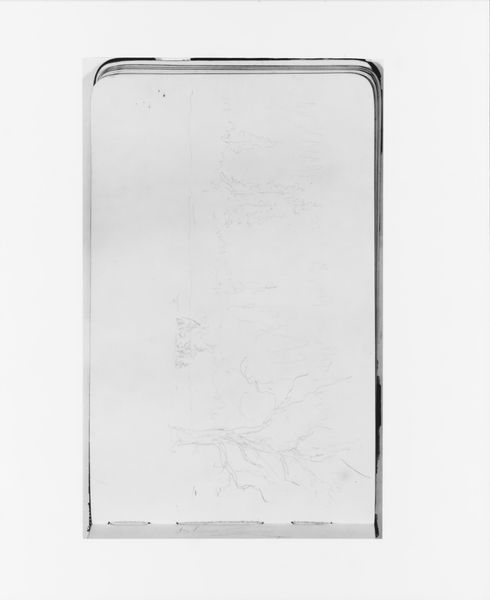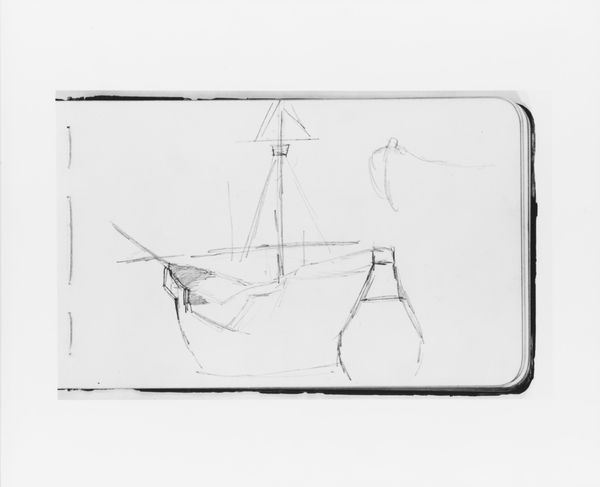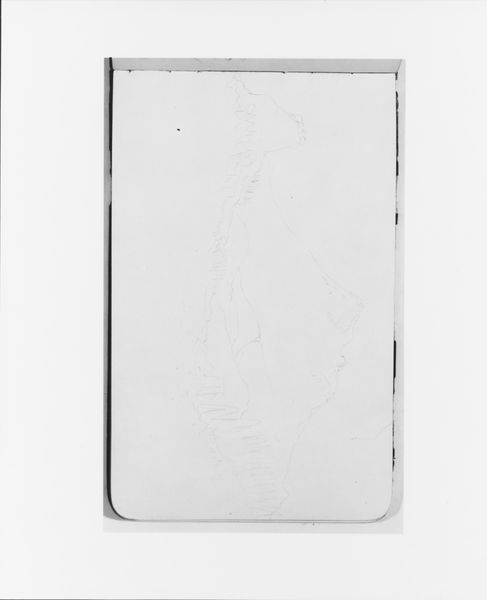
Dimensions: 4 3/4 x 7 3/4 in. (12.1 x 19.7 cm)
Copyright: Public Domain
Curator: What first strikes me about this drawing, this very subtle "Mountain Landscape" from 1890 by Albert Bierstadt, is its fragility. It looks like a breath held lightly on paper, almost ephemeral. Editor: I see that fragility too, but it reads as incomplete in a really productive way. You get this incredible sense of the raw materials at play: paper, graphite, the artist’s hand mapping terrain… it highlights labor. Curator: Yes, incomplete. It invites us to collaborate with the artist, filling in the textures, imagining the light. Bierstadt, known for his grandiose landscapes, here offers a whisper, a starting point. What kind of pencil strokes can map those grandiose visions? It has a raw, vulnerable energy. Like he is searching to record those awe inspiring heights he witnessed first-hand! Editor: Absolutely, but what about the sketchbook itself? It is mass-produced and probably filled with cheaper paper, very unlike his formal exhibition paintings. Think about the journey this landscape took. Curator: He must have sought to grasp that experience. In Romanticism, that experience of sublime grandeur could only be partially expressed through such a humble tool. What could fully translate what he found? I feel that awe, that striving, resonating here. What he’s after is greater than what those materials afford him, in a very affecting way! Editor: But look closer! It looks like a common bound sketchbook, accessible to amateurs. Its existence and subsequent survival challenges ideas about what is or is not valuable artistic labor, and what art we conserve. Bierstadt sketching—or a worker on an assembly line doing the same work every day, what dictates our investment in their survival? Curator: Well, that's the question, isn't it? Perhaps it's this tangible reaching. To capture some element beyond material conditions; he translates the untouchable into this realm through repetitive labor—touching the paper to find a sense of the mountains that touched the sky. Editor: Exactly, the drawing makes the labor transparent, connecting us not just to the finished vision but also to the act of its making and materials employed, and what and whose labor society deems valuable. Curator: Well, there it is... Editor: The question we need to answer next time we're hiking up there, huh?
Comments
No comments
Be the first to comment and join the conversation on the ultimate creative platform.
